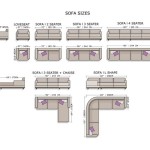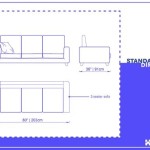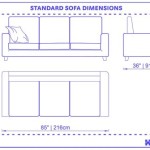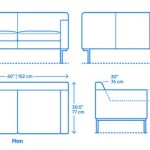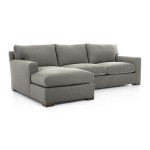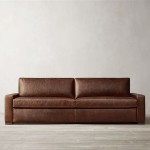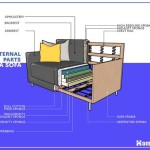Sofa Foam Padding: A Comprehensive Guide
Sofa foam padding plays a crucial role in both the comfort and longevity of a sofa. Understanding the various types of foam, their densities, and their applications can significantly impact the sofa-buying process. This guide will explore the different aspects of sofa foam padding, enabling informed decisions based on individual needs and preferences.
Types of Sofa Foam Padding: Several foam types are commonly used in sofa construction, each offering distinct characteristics:
Polyurethane Foam: This is the most widely used type of foam in sofas due to its versatility and affordability. It comes in various densities and firmness levels, catering to a wide range of seating preferences. High-density polyurethane foam offers greater support and durability, while lower-density options provide a softer, more plush feel.
High-Resiliency Foam (HR Foam): HR foam is a step up from standard polyurethane foam, offering enhanced durability and resilience. Its molecular structure allows it to recover its shape quickly after compression, extending the lifespan of the sofa and maintaining its comfort over time. This makes it a popular choice for high-traffic areas.
Memory Foam: Known for its body-conforming properties, memory foam molds to the shape of the sitter, providing personalized support and pressure relief. Though commonly associated with mattresses, memory foam is increasingly used in sofas, particularly for those seeking enhanced comfort and pain relief.
Latex Foam: Latex foam is a natural and durable option derived from rubber trees. It offers excellent breathability, resilience, and hypoallergenic properties. Latex foam is also known for its resistance to dust mites and mold, making it a suitable choice for individuals with allergies.
Foam Density: Foam density is a crucial factor in determining the support and durability of a sofa. Density is measured in pounds per cubic foot (PCF). Generally, higher density equates to greater support, durability, and longevity. However, higher density doesn't necessarily correlate with comfort, as individual preferences vary.
Low-Density Foam (LD): Typically ranging from 1.5 to 1.8 PCF, low-density foam is generally used in back cushions or as a top layer for comfort. While soft and plush, it may not offer sufficient support for prolonged sitting.
Medium-Density Foam (MD): Ranging from 1.8 to 2.5 PCF, medium-density foam provides a balance of comfort and support, making it suitable for both cushions and seat cores. It’s a common choice for everyday use.
High-Density Foam (HD): Starting at 2.5 PCF and above, high-density foam offers superior support and durability. It's often used in the core of seat cushions to provide structural integrity and prevent sagging over time.
Foam Firmness: Foam firmness is distinct from density and refers to the subjective feel of the foam. It is often described using terms like soft, medium, and firm. The ideal firmness level depends on personal preference and the intended use of the sofa.
Indentation Load Deflection (ILD): ILD is a measurement used to quantify foam firmness. A higher ILD rating indicates a firmer foam. Understanding ILD ratings can help consumers compare different foams and select the appropriate firmness for their needs.
Layering and Construction: The way foam layers are combined within a sofa significantly impacts its overall feel and performance. Manufacturers often use a combination of different densities and types of foam to achieve the desired comfort and support levels.
Wrapped Foam Cushions: These cushions feature a core of high-density foam wrapped in a layer of softer foam, such as down or fiberfill. This combination provides supportive seating with a plush, comfortable feel.
Channel-Back Construction: This method utilizes individual channels filled with foam, providing structured back support and a tailored aesthetic. This construction prevents the filling from shifting and maintains a consistent shape over time.
Considerations for Choosing Sofa Foam Padding: When selecting a sofa, consider the following factors related to foam padding:
Usage Frequency: High-traffic areas require more durable, high-density foam, while occasionally used sofas can utilize lower-density options.
Body Type and Weight: Heavier individuals may benefit from higher-density foam for adequate support.
Personal Comfort Preferences: Some individuals prefer a firm, supportive feel, while others prioritize a softer, plusher experience.
Budget: Higher-quality foams typically come at a higher price point. Balancing budget constraints with desired features is essential.
Maintenance and Care: Different foam types require varying levels of maintenance. Understanding the cleaning and care instructions for the specific foam will help maintain its longevity.
Long-Term Durability: While initial comfort is important, considering the long-term durability of the chosen foam will ensure lasting satisfaction with the sofa purchase.

4 Secrets To Finding Upholstery Foam A Erfly House

Replacement Foam Sofa Cushions Super

Replacement Seats And Cushions Foam

Sofa Foam Replacement Seat Cushions Cushion

Down Vs Foam Sofa Cushions Circle Furniture

Couch Cushion Foam Solutions

Blue Jute Contour Model Moulded Pu Foam Sofa Cushion

High Density Upholstery Foam Seat Sofa Cushion Replacement Sheets Padding Com

Upholstery Foam Cushion Sheet 5x30x72

Foam Cushion 6 T X 24 W 80 L 1536 Medium Firm Sofa Seat Replacement Upholstery Slab Padding Com

